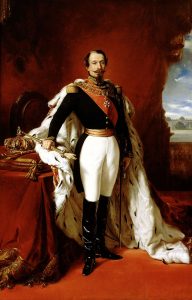Reflection about evolution of Fashion in the 20th Century
Throughout the history of fashion, the diversity that currently characterizes women's clothing was a fact that began to emerge in the century XIX and asserted itself throughout the century XX, triggered by economic and political changes and their respective social and cultural repercussions. The gender equality demanded by women was reflected in the way they dress. Some pieces, when transferred to the women's wardrobe, were no longer used by men, because the exclusive character of representations of masculinity was removed from them.

Franz Xaver Winterhalter. Napoleon III (1855). oil on canvas 240cm x 155cm. In the 19th century only men were allowed to wear tall boots. https://commons.wikimedia.org/wiki/File:Franz_Xaver_Winterhalter_Napoleon_III.jpg
This variety resulted from the progressive assimilation of garments that until then were exclusive to men's fashion, such as pants or boots, by women's fashion. Cleverly, women's fashion adapted these typologies and constantly reinvented them, giving a more masculine character to women's clothing. By assimilating men's pieces, women's fashion thus started the androgynous trend.
Some pieces, when transferred to the women's wardrobe, were no longer used by men, because the exclusive character of representations of masculinity was removed from them.
Women's fashion has not only become more masculine as it has appropriated men's clothing, but this reinvention and readaptation that it has made of garments has contributed to its diversity: patterns, textures, colors, materials and typologies.
